Fall Games Preview 2016: Five Major Multiplayer Shooters
No Fall games season is complete without a bevy of multiplayer shooters, and 2016 is no exception. We round up the best of the bunch.
This article first appeared on USgamer, a partner publication of VG247. Some content, such as this article, has been migrated to VG247 for posterity after USgamer's closure - but it has not been edited or further vetted by the VG247 team.
Those who enjoy multiplayer battles are spoiled for choice this Fall, with five potential blockbusters being dropped over the next couple of months that feature major PvP components. Here's a rundown of them all.
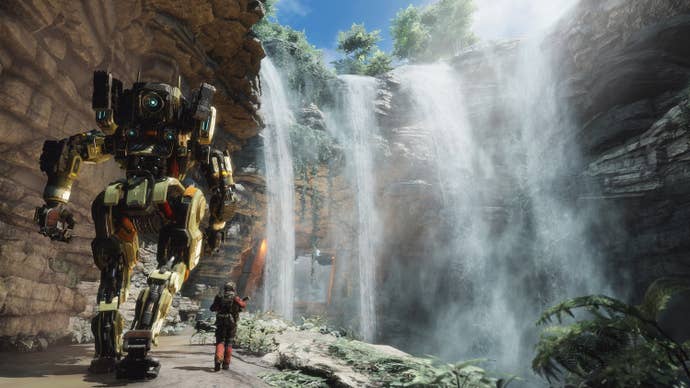
Titanfall 2
What is it?
Respawn Entertainment follows up its inaugural 2014 shooter with a sequel that features a substantial single-player campaign, as well as multiplayer that sports a host of new modes.
The core multiplayer action feels very similar to the original Titanfall. That's because the game's chained movement system remains largely unchanged, which is understandable, since the original's controls were almost universally praised for the freedom of movement that they delivered, allowing players to smoothly mantle, double-jump, and wall run around the game's environments. There are just two new additions to the movement mechanics this time around – the ability to power slide, and a grappling hook that you can use to maneuver around the environment even more quickly, or grab onto enemies.

Are we excited?
Yes, for the most part. I put plenty of time into the Titanfall 2 pre-alpha technical demo that was released at the end of August, but despite it featuring three all-new modes, 6 vs. 6 Bounty Hunt, 6 vs. 6 Amped Hardpoint, and 8 vs. 8 Pilot versus Pilot, I did get a distinct feeling of déjà vu while playing it. That's not to say it wasn't fun – Titanfall 2's player versus player does feel good – but the fundamental gameplay hasn't changed much compared to the original, so it's lost some of the impact that it had the first time around.
Calling in Titans and stomping around the battlefield still remains entertaining, however, and helps give the game a unique differentiator to the rest of the titles here. Titanfall 2 continues to cater well to individual playstyles, and offers a wide variety of weapons and perks that enable players to tweak and customize their loadouts to suit the way they tackle the game. Whether you're a sniper, or a run-and-gunner, or something in between, Titanfall 2 has you covered.
Overall, Titanfall 2's evolution from the original Titanfall isn't a huge step forward, but its new multiplayer modes do give it more depth and replayability than it had in its original incarnation.
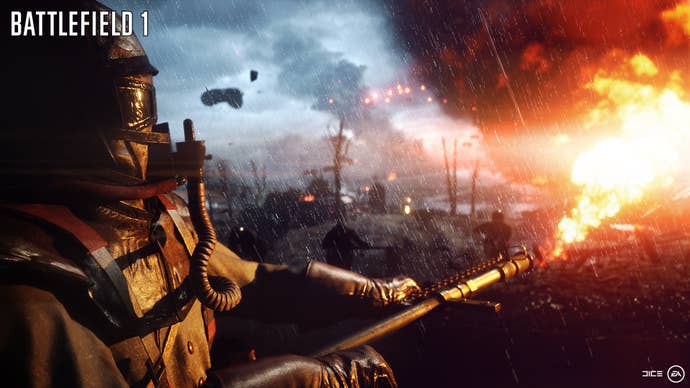
Battlefield 1
What is it?
Developed by EA DICE, the fourteenth entry in the venerable Battlefield series is set during the Great War of 1914-18, and is focused on delivering large-scale player versus player conflicts. As in previous Battlefield games, the massively multiplayer action plays out across expansive maps where two teams of up to 32 players battle it out over objectives.
There are eight different classes to choose from, several of which are able to summon vehicles such as tanks, bi-planes, and even horses. Other classes include a Medic who can heal and revive fellow players, a sniper-focused Scout Class who can spot enemy players and highlight them on the map, and an anti-vehicle Assault Class.
What gives the game a slightly different feel from most of the shooters on this list is that players get to wield historically accurate weaponry from the period. These include bolt-action, automatic, and semi-automatic rifles, pistols, flamethrowers, artillery, and light and heavy machine guns, along with mustard gas and grenades, and a variety of melee weapons.
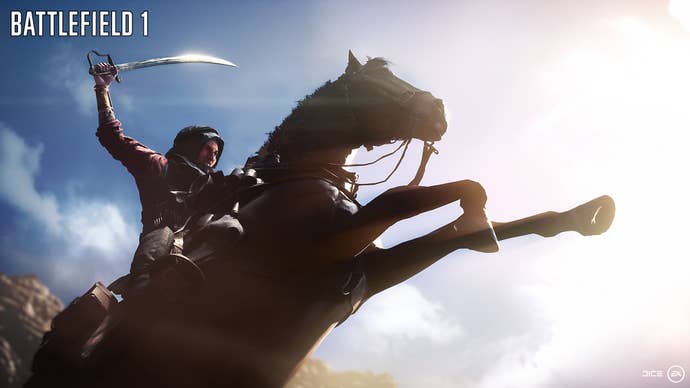
Are we excited?
Yes. So far, the game is looking very promising. World War I is infamous for its massive, brutal battles, and this is very much reflected in Battlefield 1's gameplay. The action is fast and visceral, and you really have to have your wits about you to survive for any period of time. Because the maps are so large, they're the perfect playground for snipers and artillery, which means you have to use cover as much as possible and not stand around in wide open spaces lest you get picked off with ease.
The game looks amazingly lifelike, and features some very well designed, fully destructible environments that range from a bombed-out Western Front through the Sinai Desert to a spectacular-looking Italian Front whose backdrop is the Alps. Generally speaking, the landscaping is exceptionally well executed, with a wide variety of buildings, trenches, and even villages to fight through, making Battlefield 1 an exciting game to play within.
What further enhances Battlefield 1's realism is its superb atmospheric effects. Smoke from explosions and fires drifts across the landscape, and dust is kicked up from the ground, making the air seem almost thick. The lighting is excellent too, and contributes to making this game one of the best-looking shooters we've seen so far.
Bottom line, Battlefield 1 looks to be one of the best entries in the series in years. The large-scale conflict combined with its incredible audio-visuals make for a very impressive game that looks like it's really going to deliver the goods. Hopefully it won't skimp on its content like Star Wars: Battlefront did at launch.
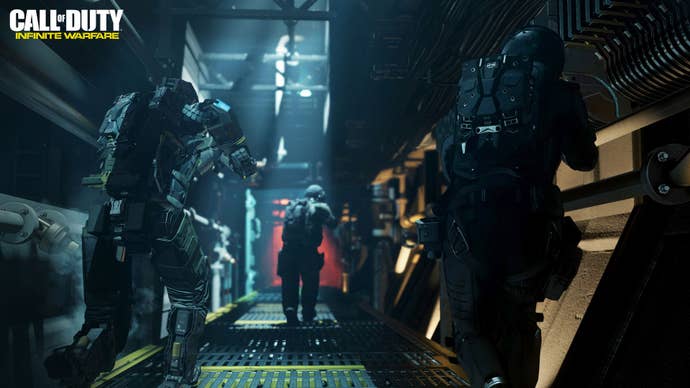
Call of Duty: Infinite Warfare
What is it?
After last year's excellent Black Ops III, the thirteenth game in the Call of Duty series has a lot to live up to. Set in the far distant future, and featuring a space-oriented premise, Call of Duty: Infinite Warfare's multiplayer is built around combat rigs that players' avatars wear while fighting. There are six of these to choose from, and each enables a distinctly different playstyle from sniping through defense to suppression. Each rig can be macro-customized thanks to a trio of selectable payloads (weapons-focused special abilities) and traits (single, powerful perks), so that you can set them up to play exactly how you want, whether that's picking enemies off from afar, or getting up close and personal with a shotgun.
An interesting new aspect of the game is that players are now able to make their own weapons using Salvage, which is a crafting currency earned while playing multiplayer games. In this fashion, prototype weapons can be created that feature "Gun Perks;" additional benefits that give them specific functionality that dovetails with combat rigs' traits to further enhance particular playstyles.
It all adds up to create a Call of Duty that continues the series' trend of ultra-customizable characters that enable you to "play it your way."
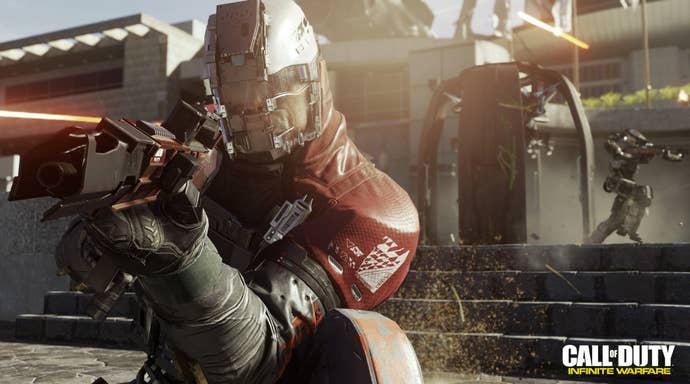
Are we excited?
Yeah – pretty much. I played the latest multiplayer build of Call of Duty: Infinite Warfare at the recent Call of Duty XP event, and enjoyed my time with the game. My initial reaction was that it seemed to play very similarly to Black Ops III, largely because its movement system and fundamental action isn't that different, but the more I got into it, the more I began to appreciate the incremental differences that separate Infinity Ward's game from Treyarch's.
The action seems a tad faster this time out, and the combat rigs' payloads and traits allow players to even more finely tune their characters than they have in the past. More interestingly, however, is that the new traits and payloads system basically add new moves and weapons abilities to characters, such as being able to turn almost invisible for a brief period of time, destroying incoming enemy projectiles, and marking targets so that they don't regenerate health for five seconds. It gives players unique abilities that they can deploy in clutch moments to help turn the tide of battle. The payloads and traits I tried were generally less devastating than Black Ops III's Specialists' super-weapons, but seem to be usable more often – or take the form of permanent passive effects.
In many respects, it's business as usual for the Call of Duty franchise. Infinite Warfare is a great-looking, smooth-playing game that doesn't depart much from the current series formula, essentially offering an incremental upgrade over the previous version. Ultimately, it seems very much built to cater to the hardcore players of the series – and is indeed geared for eSports. That may or may not be a good thing, depending on your point of view.
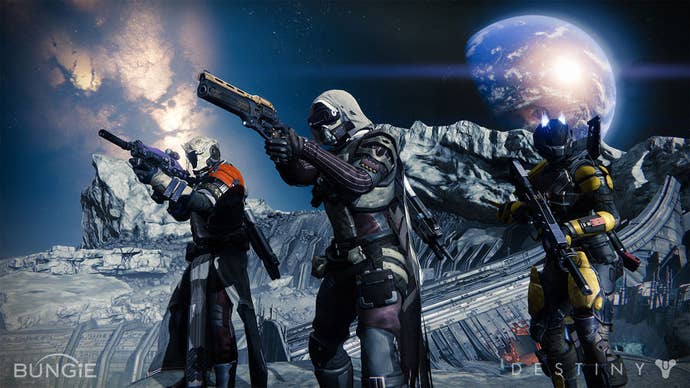
Destiny: Rise of Iron
What is it?
Destiny's latest expansion, Rise of Iron, arrives next week. The update will usher in a new Earth zone called the Plaguelands, along with a new Strike and Raid, and eight new artifacts to earn that can grant characters special abilities. More relevant to this article, however, is that there are new additions to the PvP side of the game, with three multiplayer maps (Floating Gardens, Skyline, and Last Exit) and a new mode, Supremacy. Here, players have to collect crests from the enemies they kill to score points – very similar in style to the Kill Confirmed mode that's featured in games like Call of Duty.
Additionally, players will now be able to create and host private custom multiplayer PvP matches. As well as being able to choose the map and game mode, there are a wide variety of variables that can be tweaked, including the number of players in a match, whether or not gear level counts, and the score and time limits.

Are we excited?
Yes. In the lead-up to the expansion, Bungie announced some major weapon and perk balancing that'll arrive with the upcoming 2.4.0 patch. Tweaks are being made to pretty much every weapon, from shotguns to sniper rifles, as well as modifications to specific exotic arms. Quite how the changes will affect the overall game remains to be seen, but it seems like Bungie is making a real effort to ensure Destiny's PvP is as balanced and equitable as it's ever been.

Gears of War 4
What is it?
Gears of War 4 stands apart from the other games here because it's a third-person, cover-based shooter, giving it a feel that's distinctly different from the likes of Call of Duty: Infinite Warfare and Battlefield 1.
The game is set some 25 years after the events of the 2011 release Gears of War 3, and centers around the exploits of Marcus Fenix' son, JD, and his friends as they deal with the Swarm, a new alien threat that has risen to challenge the remnants of humanity that are rebuilding their lives on Sera. The multiplayer aspect of the game utilizes this theme by introducing new weapons that are based on construction tools. The two that we’ve played with so far are the Buzzkill and Dropshot. The former shoots deadly buzz saw blades that can bounce off walls and objects, while the latter fires a grenade-like projectile it in a arc that one-shot-kills anyone who's in its vicinity when it goes off.
A lot of development work has gone into creating challenging AI opponents so that players can set up a variety of different match types to practice multiplayer, from a couple of people playing against one another with bots filling out both teams, to an entire team of players playing against a complete field of bots. The bots' AI incorporates different kinds of personalities, and they can work together as a team. Combine that with a variety of different difficulty levels from Casual to Insane, and you have a system that will enable players to practice the game to a quite high level. Obviously, bots will never be as good as the best human players, but apparently the Insane-level AI is capable of putting up a seriously good fight.

Are we excited?
Yes – moderately so. The Coalition has said that it's working to make Gears of War 4 the "best Gears of War multiplayer experience ever", by essentially returning it to the gameplay style of Gears of War 3 and "embracing what makes Gears unique." What that means in a nutshell is cover-based shooting that plays out like a horizontal platformer, the new aforementioned weapons, new cover mechanic kills, and, of course, plenty of grisly close-quarters combat.
Gears of War 4's action is generally slower and steadier than most of the shooters here, with a focus on utilizing cover to close in on, and eventually overpower opponents by either using the new vault kick and yank and shank melee moves, or by being quicker on the draw when you're in a face-off. It makes for a game that feels quite strategic, and where team play is all-important, particularly when it comes to working together to flank opponents that might be well entrenched in cover.
The multiplayer demo that was released in April featured two modes: Deathmatch and Dodgeball. The former is a exactly what you'd expect – a race to score the most kills – while the latter is a push-pull affair where you have to eliminate the opposing team. What makes this mode interesting is that if you get killed, you can't respawn until one of your teammates eliminates an enemy. This makes for quite tense back-and-forth games where teams can mount exciting comebacks if they repeatedly kill the opposition.
Ultimately, Gears of War 4 looks pretty entertaining. The return to the original trilogy's multiplayer style should appeal to fans of the earlier games, while its third-person cover shooting mechanics are a nice change of pace for those who might want something a little different from their multiplayer shooting action.
